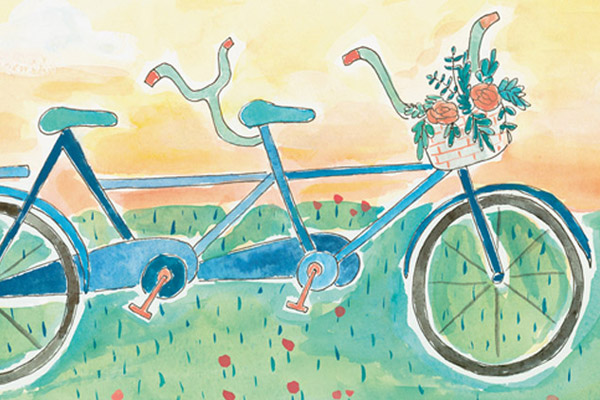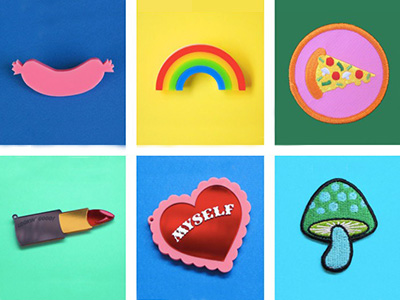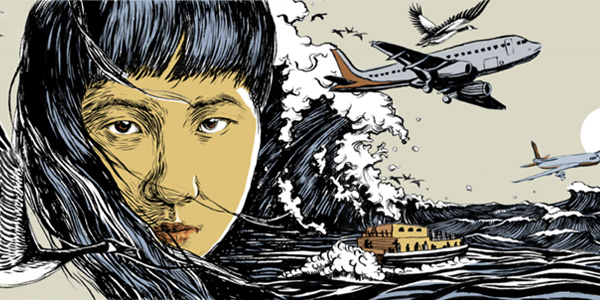After laying down the basics in creating your image with masking, color theme, and value structures, the next step would be to know how we can create poetry in our work. We do that through meaningful compositions. There are various camera language, i.e., camera angle, distance, and shot, to start with composing your story. To know what these compositions present can help you deliver your message even stronger.
See below as I break down the different camera language to help lay the foundation of your scene. And I hope you’ve enjoyed these and are inspired to move your idea forward. Please use the hashtag #AdobeCreativeSide and tag me in your images using this feature. I would love to see how you’re doing. Cheers to making meaningful art.
Let’s talk about values!
Clear value composition is one of the main reasons why our eyes land on a certain part of an artwork. It is important in guiding the viewer on where you want their eyes to go - controlling them without making it obvious.
The heart of a good composition is getting the audience to look at what you want and to experience it the way you want without them sensing that they are being guided.
One way to do that is by the use of contrast. When there is contrast, we can recognize what is the most important part of an image. Because our eyes are drawn to high contrasts area repeatedly.
So as an artist, we need to learn the tools on how to make the viewer experience what we want through composition.
Watch me break down the basics of composition using just value contrast.
Let's talk about colors.
A beautiful color composition can feel almost magical and color is a strong indicator of the story that you want to tell.
The combinations of colors can subconsciously make you experience different emotions. That is why we need to be deliberate in our choices with colors to evoke the particular mood of each scene.
In my two photos, even when everything is the same but because of the change in colors it takes on a totally different meaning.
Next time when you’re working on your next piece and you feel kind of stuck, think of what it is you want the viewer to feel and start from there.
For a happy vibrant image go for yellows/to the warmer spectrum of the color wheel. For a somber melancholic vibe go towards the cooler side of the color wheel.
I hope this inspires you to showcase your #Adobecreativeside @adobestudents
Check below for a breakdown of these tools.
Whether you are taking a photography class or interested in learning a new skill for your own educational development, I'm going to teach you some tips and tricks in Photoshop that I usually use in my workflow.
First off, if you ask me what is the most basic thing you need to know when starting Photoshop, I’d say layer masks. Knowing the layer mask tool is really helpful for beginners so that you will have the versatility of going back to your layers at any given time in your project.
See below for some clips on how I remove unwanted parts on this image through layer masks in my scene with only a brush tool and a channel selection after I’ve finalized this is where I want it to be.
Share your try at these tips by posting them on Instagram and tagging me, @adobestudents and #AdobeCreativeSide in your posts!
Scene planning/composition is one of the most important parts of my process. Layer masks give me the assurance that I can get back that certain pixel of the image when I need some adjustments later on.
Masking is Photoshop allowing you to erase pixels without actually erasing anything.
Photoshop can be really daunting in the beginning but to know and master each tool thoroughly gives you the skill you need to create what you’ve imagined.
Check the videos below to see how I break down these tips #AdobeCreativeSide
Share your try at these tips by posting them on Instagram and tagging me, @adobestudents and #AdobeCreativeSide in your posts!





